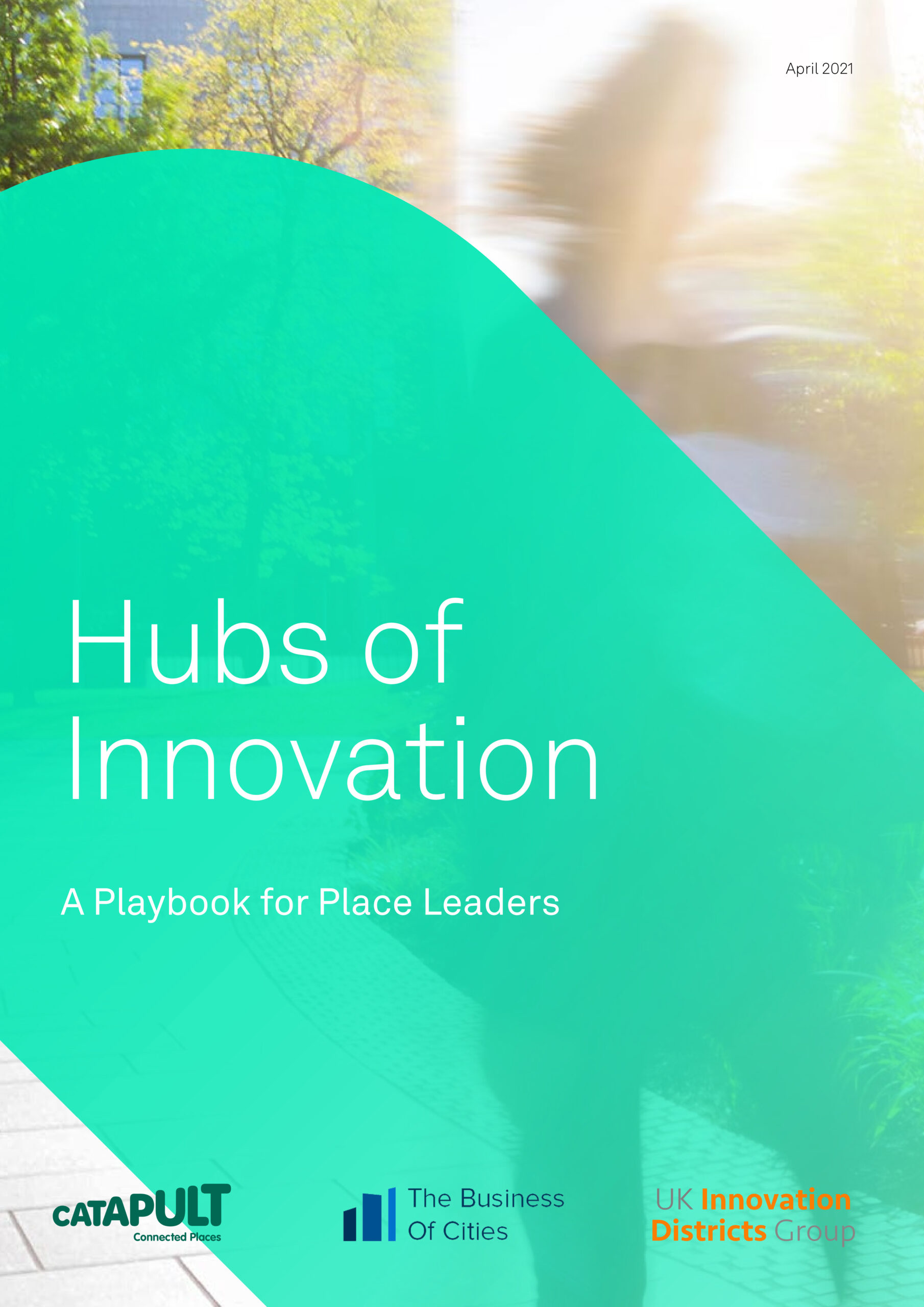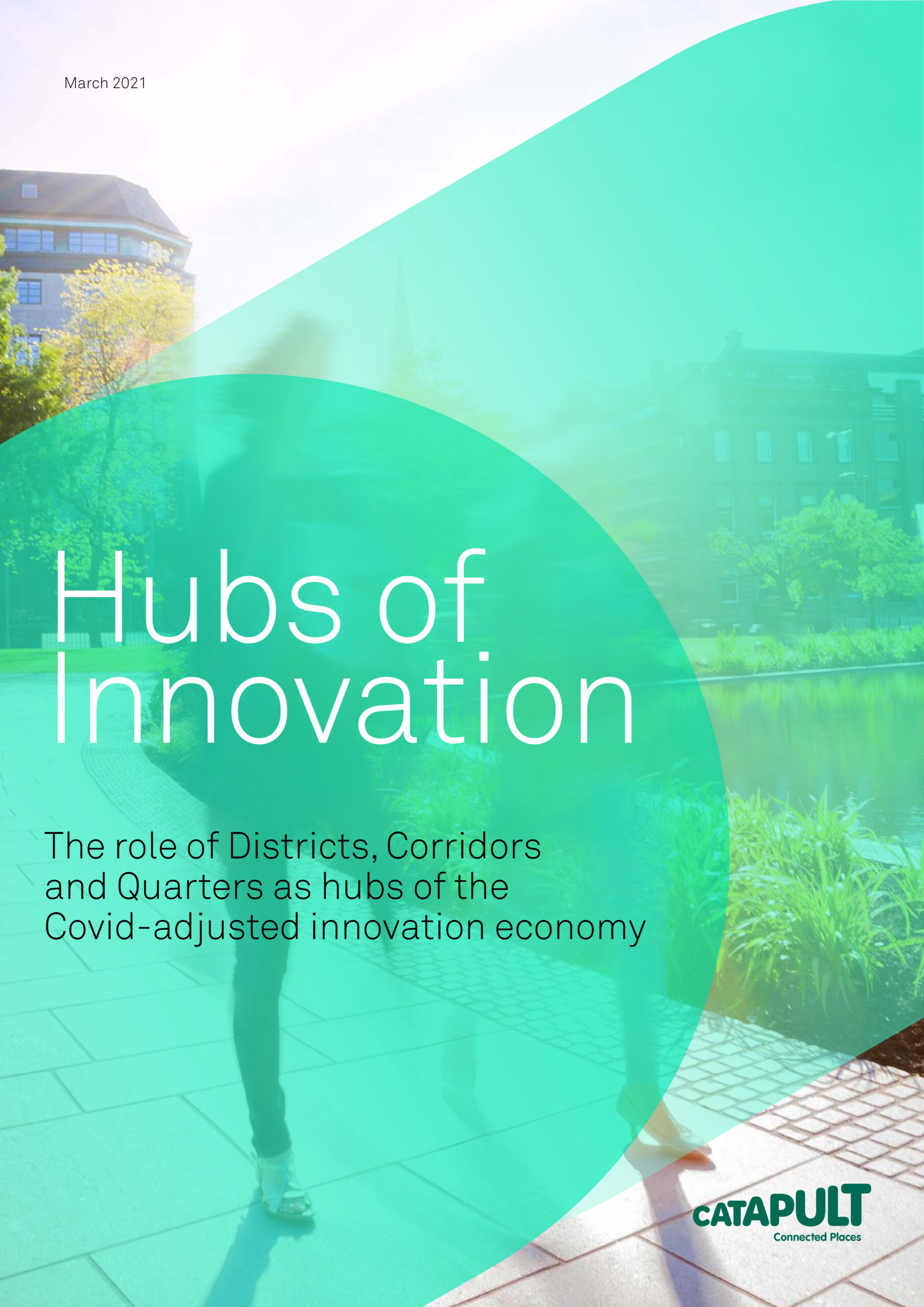The UK is now home to more than 100 of the world’s designated hubs, and the ambition is to expand and redistribute the innovation economy. This will include growing the economic and social returns of these projects, which makes it even more important that new hubs are set up correctly and existing ones optimise their approach.

The six milestones for innovation hubs
With the right basis and core principles in place, UK-based hubs and those around the world can turbo-charge their progress. The Connected Places Catapult has defined six key stages on the journey to building an effective hub, making it easy to identify where you are in the process. Innovation is at the forefront of the UK’s strategy for competitiveness, and as our report reiterates, innovation happens in places.
Beginning the journey
Understanding the ecosystem enablers is crucial when establishing a hub of innovation, providing a baseline from which to build on. First and foremost, a high information flow needs to be established among knowledge anchors and businesses, requiring engagement key markets through exchanges, delegations, and forums. A place-based perspective must also be encouraged, replacing disjointed mentalities that prevent alignment.
Once information is flowing efficiently, decision-makers should ensure that a ‘whole region’ economic strategy is implemented and based on future market drivers. This should be a long-term approach that substantiates investment priorities and sources of competitiveness. Having this overarching roadmap is critical to progress and will help to align the various stakeholders involved in the hub’s creation.
Any barriers to accessing risk capital must also be identified as a priority, and a proactive approach to flexible land use should be taken to accommodate future population growth. Culture will also be of upmost importance in the success of your innovation hub, particularly in terms of open innovation. This can be fostered using open data platforms and the reform of existing systems and gateways, ensuring that more points of engagement are made available. Finally, government co-operation and innovation appetite should be enhanced through collaborative governance, and by demonstrating a willingness to adopt new models.
Crafting the vision
Establishing a genuine USP is an important marker that you are making progress on the path to innovation. This includes identifying your hub’s authentic, world-leading capability, defining sector focuses, and ensuring real differentiation is achieved. Once the project has reached this level of maturity, building a committed coalition of stakeholders and capital partners is an invaluable next step. As part of this, interests should be aligned, value shared, and investment partners need to be engaged.
Attracting wider buy-in will rely heavily on the credibility of the project’s vision and how compelling its narrative is. This is a prime opportunity to establish a ‘whole place’ perspective and to communicate the benefits you intend to deliver. Developing an inclusive growth framework is also important, alongside the development of flexibility and Net Zero principles. At this stage in the journey, it is time to begin tracking upcoming progress and setting targets, supporting further development and momentum.
Moving forward from this stage, it will be essential to double down on and strengthen the governance and delivery model, and to continue investing in the community. Events and forums offer a powerful way of leveraging the brands of major tenants, and for vetting inbound companies. Coherence remains an important keyword at this point, and this should be prioritised when developing site plans, masterplans, and the overall place vision.
Turbo-charging success
When reaching the critical mass stage on your innovation journey, you will have a full spectrum of community management and services in place, as well as consolidated governance. You will be investing in amenities, social diversity, and connectivity, and helping to support other locations. Above all, your hub of innovation will have become a truly connected place and will be developing a global reach and a global impact lens.
















